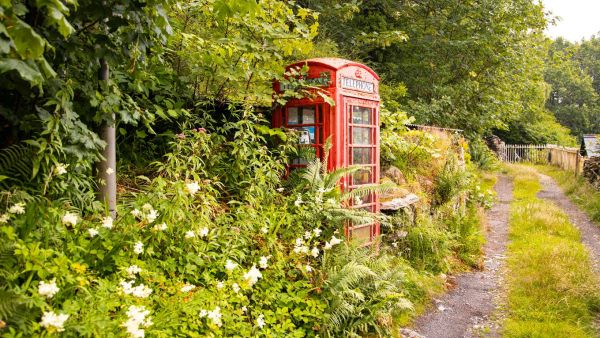
What if there was a secret phone that let you talk to your loved ones who’ve passed away? Unfortunately, that’s not a reality, but there is something that approximates the experience, and they can be found if you know where to look.
One of my first understandings of grief as a kid was a while after my grandmother died. I heard my Aunt Kris say how frequently she would forget a step of a recipe or a detail of a family story and start walking to the phone thinking “Mom would know,” before abruptly remembering that calling her was no longer an option.
It drove home what death really is — all those small, quotidian details you never quite get used to the absence of. Aunt Kris passed away herself two years ago, and the irony was not lost on me last summer when, as my brother and I were trying to remember the name of an ancestor, I instinctively grabbed my phone and said “You know who’d know this is Aunt Kris,” briefly forgetting I can’t simply text her about this stuff anymore, just like her with my Nana all those years ago.
It’s these little things that truly add up to grief, and it is of course universal, which is surely why a series of monuments to the experience called “wind phones” have cropped up around the world. The disconnected phones are tucked away and allow people to have the symbolic experience of calling up a departed loved one for a chat.
: 9 Things I Learned About Grief That Will Get You Through The Worst Of It (I Promise)
The original wind phone, or “telephone of the wind” as it’s sometimes translated, is in Bell Gardia Kujira-yam, a botanical garden in Otsuchi, Japan. There in the European-style garden, designer Itaru Sasaki placed a phone booth in 2010 as a place for him to “call” his cousin, whom he missed conversing with after his death.
The location and timing turned out to be serendipitous, even if tragic: Otsuchi was one of many places ravaged by the 2011 Tōhoku earthquake and tsunami, sometimes known as the Fukushima earthquake and among the largest in recorded world history. Suffice it to say, there were suddenly scores of grieving people near Otsuchi looking for a way to connect to loved ones they’d lost, just like Sasaki.
The trend soon caught on all over the world, and directories of the ‘telephones of the wind’ show that today some 200 of them are scattered throughout the United States, along with dozens more across Canada, Europe, South Africa, Australia, and New Zealand.
Many of them are in parks or along walking and hiking trails, like one in the Howard Christiansen Nature Center near Kent City, Michigan that is hung on a tree like a makeshift payphone.
Despite the phones not being connected to anything, users say the impact of using them can be profound. One woman, Amy Dawson of New Jersey, told Michigan media outlet Bridge Michigan that the experience can be “powerful and healing.” Shirley Franchock, another user, put a finer point on it. “You feel you’re talking to their souls,” she said. “It’s unbelievable.”
: 10 Odd Signs A Deceased Loved One Is Nearby And Still With You
It’s tempting to regard this tradition as something akin to child’s play, but it really does go deeper than that. Mental health experts say rituals can be very comforting while grieving, and for many, visiting the wind phones creates something akin to a ritual.
They also help normalize grief, which can be a struggle for many, especially given our culture’s discomfort with the emotion. As psychiatrist Dr. Mary Morreale told The Bridge, the phones say, “This is what this is for. It’s OK to come here and stay connected to your loved one.”
Other mental health experts, like social worker Taryn Lindhorstliken the wind phone to Gestalt therapy, a counseling modality that often involves things like role play and re-enacting scenes from our lives.
The modality involves exercises like writing letters to deceased loved ones or pretending they’re sitting in an empty chair as we talk to them. The wind phones provide similar experiences — getting our thoughts and feelings out. Lindhorst says the spontaneity involved can also help the grieving air subconscious thoughts and feelings they may not know they have.
For the more metaphysically minded, it might even feel like our loved one is hearing us through the phone. For others, the simple symbolism may be enough to help with healing.
Either way, it’s a beautiful method for connecting to our loved one’s memory, and it turns out, in my case, there’s one walking distance from my house. Perhaps I’ll stroll over and ask Aunt Kris about that ancestor one of these days. She always had a memory like a steel trap, after all.
: Professional Medium Reveals 3 Reassuring Facts About The Afterlife
John Sundholm is a writer, editor, and video personality with 20 years of experience in media and entertainment. He covers culture, mental health, and human interest topics.